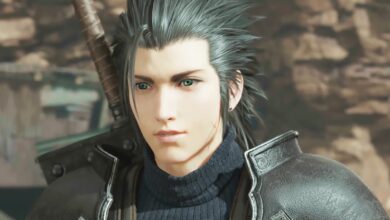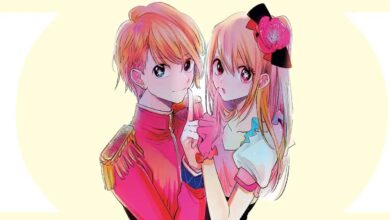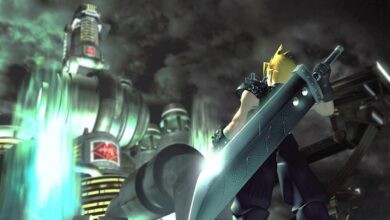“There Was More We Wanted To Say” – One Of 2023’s Best Games Gets ‘The Pristine Cut’ On Switch
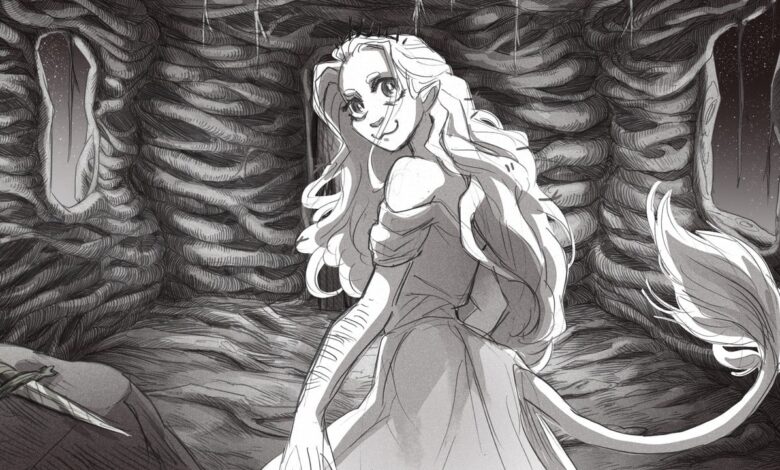
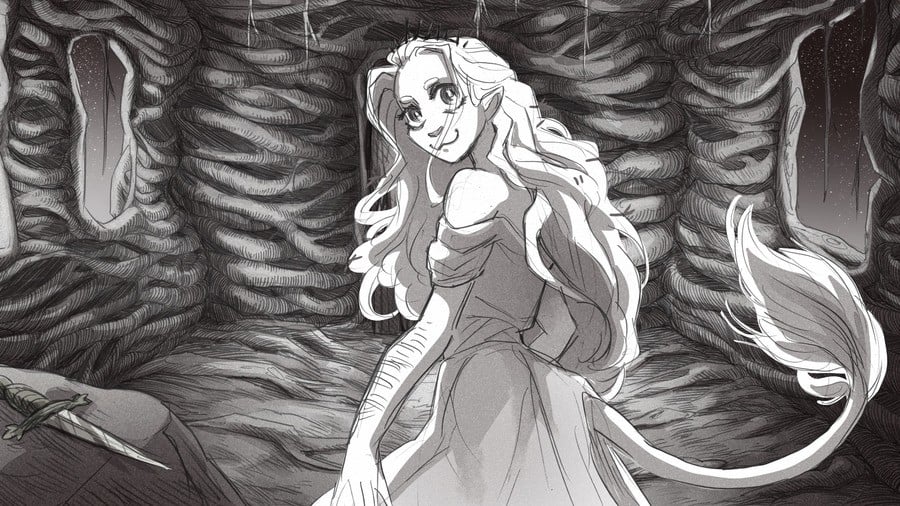
Back in 2021, Black Tabby Games — an indie studio formed by husband-and-wife team Tony Howard-Arias and Abby Howard — released the first episode of the episodic visual novel Scarlet Hollow on Steam. Visually striking with ink drawings and a deep branching narrative, the duo put the studio on the map from episode one, and fans have been lapping it up since.
But one episodic release just wasn’t enough, and in 2023, the team launched Slay the Princess, a visual novel that asks you to do what the game says on the tin: slay the princess. It’s an expectations-subverting masterclass that received rave reviews upon its release on Steam. A year later, Tony and Abby are back with an expanded version of the game that’s coming to all consoles — Slay The Princess – The Pristine Cut.
Using beautiful, haunting pencil-drawn art to convey horror and mystery, The Pristine Cut adds three brand new chapters, new princesses (yes, there are multiple princesses, but we won’t go into that…), expansions to previous routes, 1,200 new hand-drawn frames (all drawn by Abby) and over 2,500 newly-recorded lines of dialogue. It’s a mammoth rerelease for one of last year’s best, and we’re incredibly excited to dive into the game when it comes to Switch later this year.
Ahead of the game’s launch — which doesn’t have a specific release date yet — we spoke with both Tony and Abby about the upcoming rerelease of the critically acclaimed title. With Abby’s previous work as a graphic novelist, we asked about the time and effort behind the beautiful hand-drawn frames, the inspirations behind the game, and the challenges of returning to a visual novel structured like Slay the Princess.
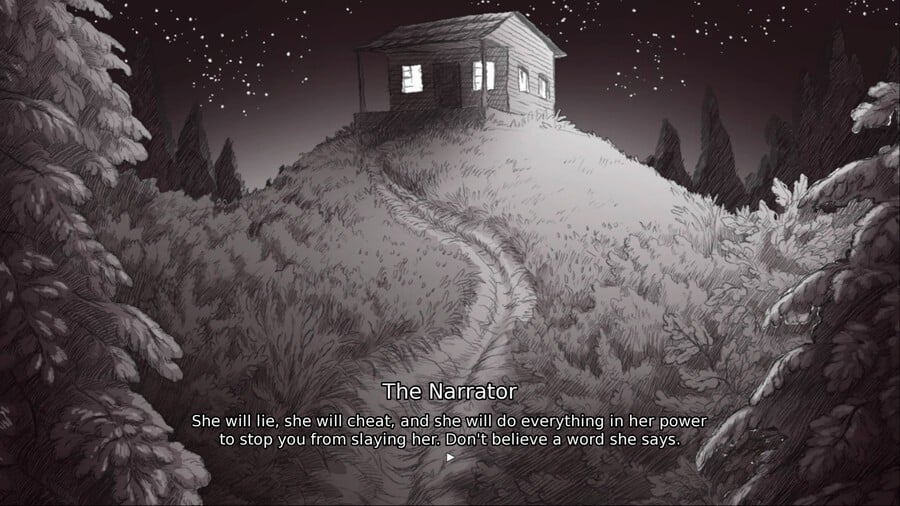
Nintendo Life: Okay, let’s start with an easy question – why ‘Slay’ the Princess instead of ‘Save’ the Princess?
Tony Howard-Arias, Lead Writer, Game Designer, and Business Manager: I pitched the original story idea for the game to Abby as the player being sent, alone, to execute a prisoner who could transform to match the player’s expectations.
Abby Howard, Lead Artist and Writer: It immediately felt to me like an inversion of saving a princess – going to a location to do [action] to an imprisoned character you don’t know, simply because of the roles you have been given. I think I suggested that right away, “Save the Princess”, as an ironic title.
…we just knew as soon as we first said Slay the Princess that it was the title we needed to land on.
Tony: And from there we realised that there was already a bit of a slant rhyme between “slay” and “save,” and from there, miraculously, the title Slay the Princess was just… available. A good title is so important for any creative work, and we just knew as soon as we first said Slay the Princess that it was the title we needed to land on.
One of the game’s inspirations was from a scene in your first title, Scarlet Hollow, which involved multiple characters discussing an incident. Are there any horror novels, films, or pieces of art that you drew on elsewhere for Slay the Princess?
Abby: I think it’s hard to pinpoint where inspiration comes from, especially for something like Slay the Princess, where each version of the Princess pulls from their own kind of tropes and style. There’s some Clive Barker (an eternal inspiration for me), there’s some Stanley Parable, and there’s a lot of folklore.
Though for things like this, I always feel like the inspiration can’t be pinned down to one or two things, instead drawing from a network of patterns formed through a lifetime of reading, watching, and loving stories. That leads to things like saying “a game where there’s a character trapped in a location and you have to go there and do something that is the opposite of saving them? Sounds Princess-y.” It’s just that good old age pattern-recognition, but instead of using it to find berries, we used it to come up with new thematically-appropriate Princess designs.
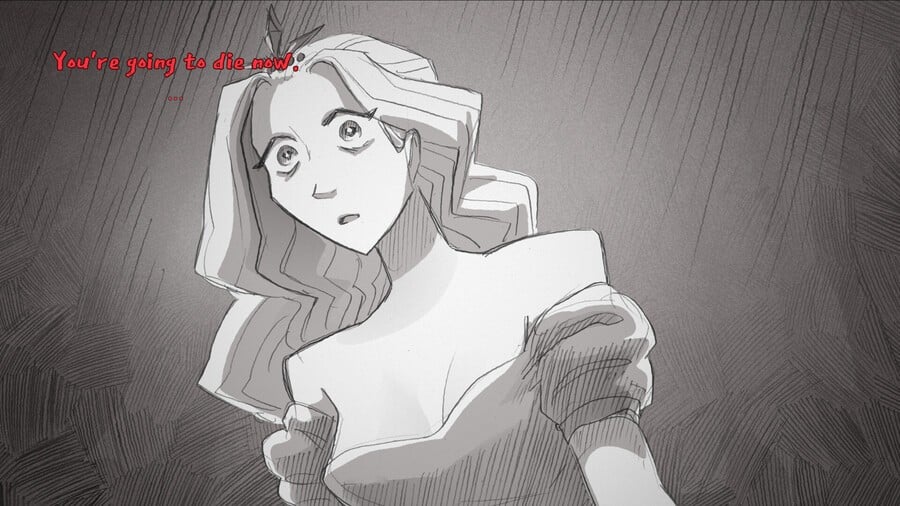
Tony: I know that Scarlet Hollow scene you’re talking about, and it’s less of a direct inspiration and more of a “oh god I desperately want to never have to work on a scene like that in any future projects.” It was this big ghost hunt in the third episode where anywhere from five to nine characters can show up.
Almost all of the character sprites in our games are drawn to be immersive with our backgrounds. So, for instance, in a large room, a character might have an entirely unique set of illustrations of them leaning against a wall. And we also move sprites in a very reactive way, so if a character on the far side of the room talks, other characters will look their way, which gets to be a lot of work when up to nine people are in a room at once. One character speaks up? I manually have to pose the other eight to look at her. All in all, between the sprite movement, and conditional logic based around who was present, and more conditional logic based around the player’s relationship with other characters, that scene was about 3,500 lines of code for something that takes players five, maybe ten minutes to get through.
Which is why with Slay the Princess, there’s only ever one non-player character on screen at a time (please ignore the fact that almost every frame has multiple poseable layers,) and altogether, Slay the Princess currently has more illustrations than the first four episodes of Scarlet Hollow combined.
When or why did you decide to make the jump from graphic novels to video games?
Abby: I had just finished work on my last big graphic novel, The Crossroads At Midnight, and was working on a pitch for my next project, but it wasn’t clicking the way I wanted it to, I didn’t feel very connected to it. At the same time, Tony was winding down his own work, so we were both at the right time for a big pivot– so we looked at each other one day and just asked what was stopping us from trying our hand at a game. That’s when we started work on Scarlet Hollow, and it’s been amazing finding our footing as game developers and working as a little team!
Tony: Since I was previously working in media and tech companies, starting a game studio was such a welcome change — I finally got to start flexing my creative muscles doing something other than DMing tabletop campaigns.
What’s the process like for translating the graphic art style from the page to a video game? How long does it take to draw a single “panel” or screen?
Abby: I have no idea how long it takes to draw anything! I feel like work expands to fill the space you give it, so that means sometimes I’ll spend forever working on a piece if I feel like I have forever to spend, or I churn them out every ten minutes in a desperate frenzy to get done on time. On average, I’d say it takes probably about half an hour for the more complicated Slay the Princess sprite art from start to finish, and an hour for backgrounds.
I have no idea how long it takes to draw anything!
As for translating that style to a video game, there are some unique challenges – mostly that it’s all in first-person perspective, which often limits what angles I can use for dramatic effect, and of course, I have to draw every single thing that happens. If you move towards a door, I have to draw a new, closer version of that door. If you shift angles in the room, I have to draw a new background from that angle. If the Princess moves at all, she needs an entirely new sprite set from her new position. You get the picture! This is why there are thousands of images in the game. Thankfully, comics trained me well – I just have to not be too precious, and accept that “done” is better than “perfect.”
Tony: Abby is miraculously fast. I don’t think we’d be able to quite make the kinds of games we’re able to make if she wasn’t essentially a one-woman army. Something she didn’t mention on her own is that, just like her comics, all of her work on Slay the Princess, except for the light use of colour, is done entirely by hand with pencils (and ink for Scarlet Hollow.) I think that’s something that gives our games a unique visual style, and with Slay the Princess in particular, the use of pencils really lends itself to the game’s constantly changing, dream-like atmosphere.
Why did you decide to return to Slay the Princess for The Pristine Cut?
Abby: Working on Slay the Princess was such a whirlwind – the initial release came after just seven months of development, so we didn’t have much time to sit back and reflect on the game outside of what we had already done. Basically, the two weeks post-release gave us that time, and we realised there were some areas where there was more we wanted to say. I call them “holes,” that’s how they felt to me– little spaces where the pattern cut off when it felt like it should continue. Three princesses who didn’t get their own dedicated Chapter 3s, and a few Chapter 3s that ended what felt like prematurely. I am so excited that we were able to do The Pristine Cut, the game is so, so much better for it!
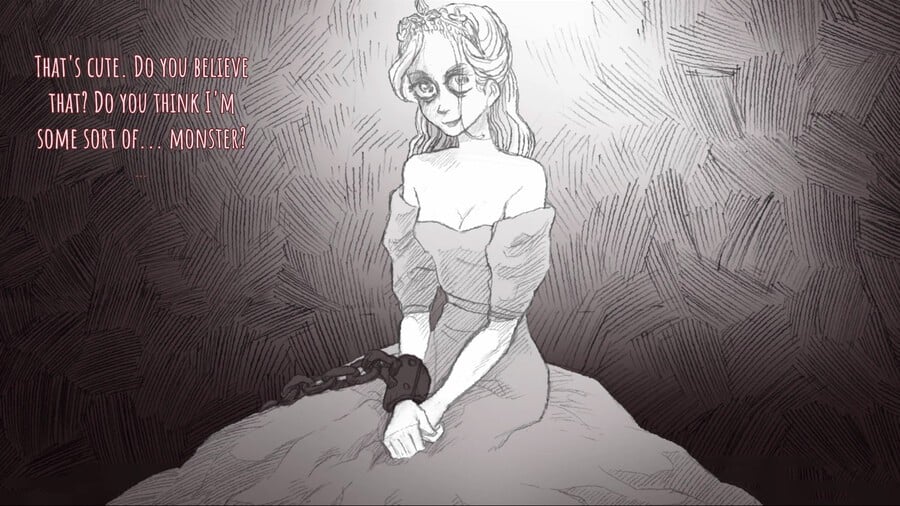
Tony: I remember we did a Reddit AMA about a week after the game came out, and people in the AMA kept clamouring for DLC, or an expansion, or a sequel, and we kept telling them “no, the game is done. If we have an idea that would actually make it better, maybe we’ll revisit it, but right now it feels like a finished story to us.”
At the time, that’s how we really felt, but after saying that to like the fifth person in a row, we kind of looked at each other and asked ourselves, “well… what if did this or that” and by the end of the day we had some really solid ideas for things we could still explore.
… people in the AMA kept clamouring for DLC, or an expansion, or a sequel
It’s really funny, because now that we’ve finished The Pristine Cut, that release version of the game — the one that we insisted to so many people felt complete — it feels completely unfinished! So I’m really grateful to the fans for asking for a little more and giving us the opportunity to really start reflecting on what we made instead of just immediately moving on.
Was any of the new content cut from the base game, or are some of the additions entirely new ideas?
Tony: We left surprisingly little on the cutting room floor, but like Abby mentioned in the previous question, we also didn’t have a lot of time to reflect on what we were working on. I would say that the ideas we did leave on the cutting room floor were left there because they weren’t working — they weren’t fun to write, and for us, if something isn’t fun to write, it isn’t going to be fun to play.
As Abby mentioned, some of the new content for the Pristine Cut takes the form of expansions to pre-existing routes, so being able to revisit some of those shorter chapters after release meant that we had a ton of really exciting ideas for how to push them to new extremes.
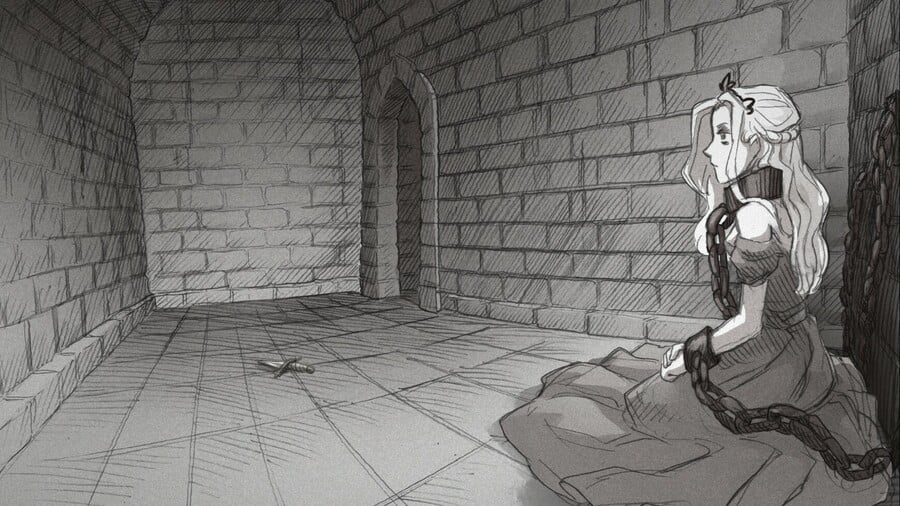
How difficult is it to seamlessly add new content into a narrative game?
Tony: I think Slay the Princess was uniquely situated for new content compared to pretty much any other narrative game. Almost every playthrough of the game is different in some way, and most players will finish the entire game having seen less than 20% of what there is to see. In fact, I think the most “routes” a player will possibly see on one playthrough is 45% — and not only would doing so be incredibly rare, but it would also mean missing out on a lot of outcomes along the way.
This structure means that the overarching story has to work with what the player learns across any possible combination of routes they travel along, which means that as long as a new route tackles the many themes of the game, and as long as it tackles those themes in new ways that offer fresh perspectives, we can expand the game without undermining the work we’ve already done on it.
… if something isn’t fun to write, it isn’t going to be fun to play.
And since so many players go through the story multiple times to deepen their understanding of it, we’re able to use these routes to provide even more context and depth to what they’ve already experienced.
Abby: To expand a little on the structure of the game, it kind of builds on choices in a way that most narratives can’t – including our other game, Scarlet Hollow. Slay the Princess has a sort of winding path style to it, where each choice is meant to take you in new directions, and the more branches we add, the clearer it becomes that you, the player, are influencing the world around you.
So inserting new branches was pretty seamless! There were a few areas where we felt more choices could be made, so we added those choices and the consequences for those choices. It would be very difficult to try this with Scarlet Hollow, as we would then have to insert the new path into the rest of the narrative from that point forward and anything new might unbalance our carefully crafted “big decision” moments, so Slay the Princess is like a playground in comparison.
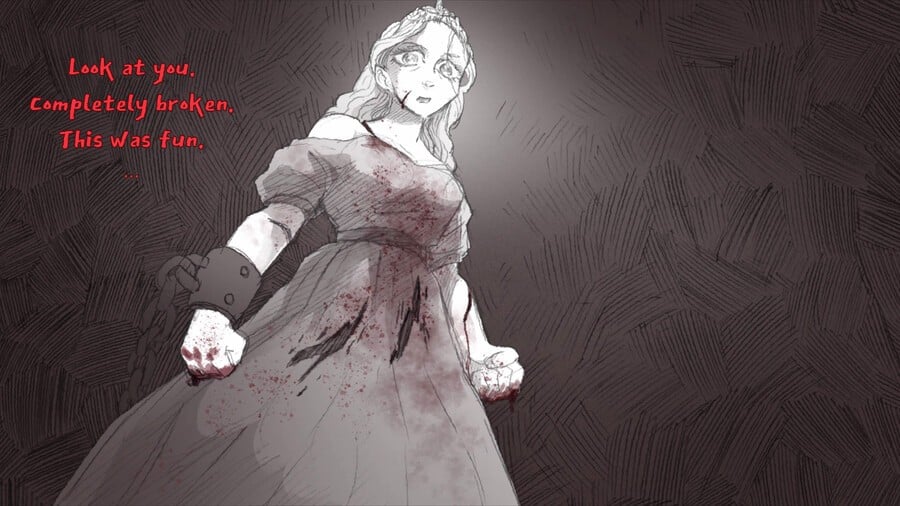
Has developing Slay the Princess – The Pristine Cut for consoles thrown up any new challenges?
Tony: Thankfully, it’s our publisher, Serenity Forge, who’s managing the porting process, so most of the porting work for us has just been looking at what the porting studio has been doing, and then saying “yeah, that’s great.” I do know that our engine, Ren’py, is famously very difficult to port to consoles, so I’m glad we’re working with a bunch of smart people who know what they’re doing.
Honestly, one of the biggest challenges with this whole process has been on the localisation side: we’re doing translated subtitles in twelve languages, and the text of the game is very metaphorical, so I spent a huge chunk of my summer working closely with translators to make sure the meaning of the original language was carried over. I think I wound up answering over 1,100 questions, on top of writing about 50 pages of literary analysis on the story, which is never something you expect to do for your own writing!
Lastly, Slay the Princess has proven extremely popular since it launched. Are you surprised by the response, and what can newcomers look forward to when the game launches on consoles?
Abby: I always go into releases with the lowest expectations possible, so I can set myself up to be pleasantly surprised if things don’t go disastrously. And I feel it’s safe to say the release went just about the opposite of my worst-case scenarios, so I was over the moon. When the first few players started finishing the game, I was absolutely floored by the kinds of things they were saying to us, and how much the game started to mean to people. I couldn’t have wished for better.
Tony: As our studio’s “analytics guy”, I knew from the reception to our first trailer that the game was going to be much bigger than Scarlet Hollow. But you also never really know how something is going to go over until, well, it’s done. Until you’ve released it. I think something that never really gets talked about is what dealing with the volume is like when a game gets big. It’s been so kind to us, but it’s also a part of your brain that you never really get to fully shut off!
This interview has been edited lightly for clarity.
We want to give a huge thank you to Abby and Tony for taking the time to answer our questions. Slay the Princess – The Pristine Cut launches on Switch and other consoles in 2024. The Pristine Cut content will be free to those who own the game on Steam.
Let us know whether you’ll be saving, or slaying, the princess in the comments.

